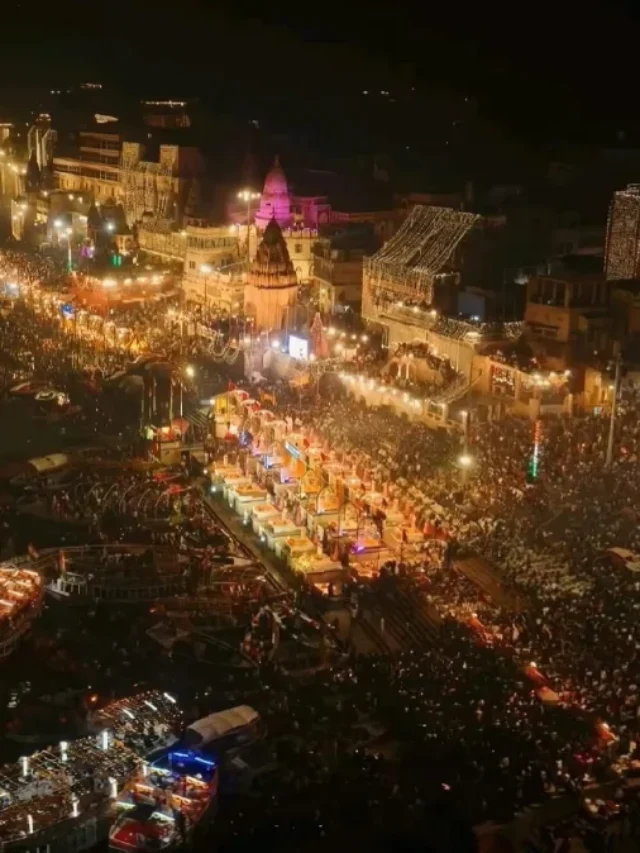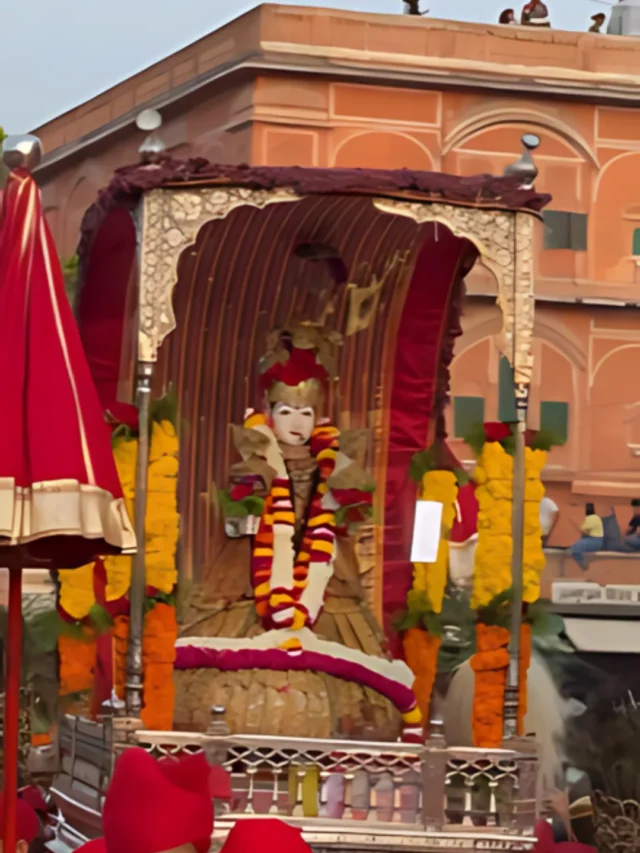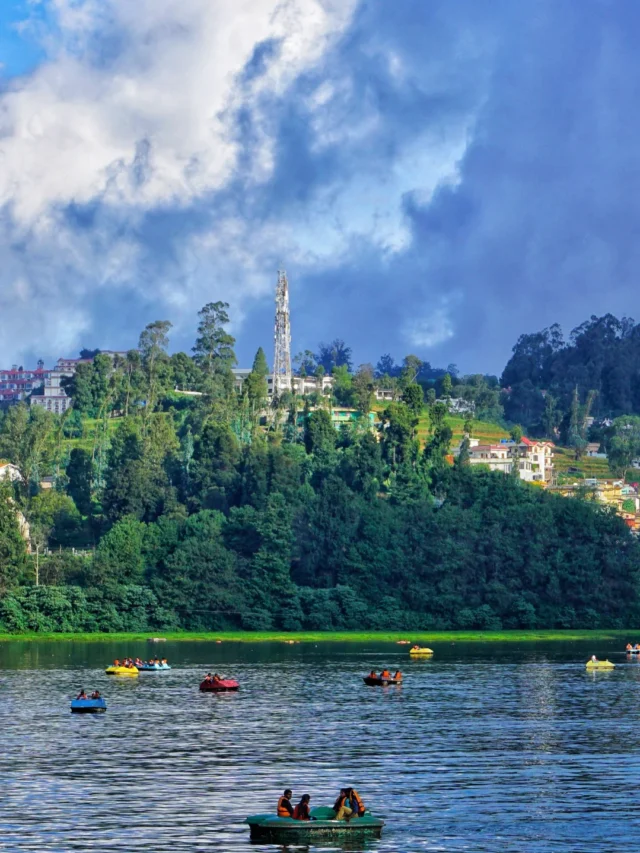Enter the enchanted realm of Rajsamand, where legends of imperial grandeur resound from every cobblestone street and Rajasthan’s rich legacy is painted in the sky every sunset. A trip that spans time and perfectly combines history, culture, and natural beauty is what this hidden gem has in store for you. Explore the diverse array of experiences that this location has to offer, which spans around the best places to visit in Rajsamand, from the serene banks of the renowned Rajsamand Lake to the magnificent Kumbhalgarh Fort. Come along with us as we set off on a virtual expedition across the captivating scenery and cultural gems that make Rajsamand a must-visit location for adventure seekers. Continue reading and let Rajsamand’s magnetism capture your thoughts.
8 Best Places to Visit in Rajsamand
1. Kumbhalgarh Fort – A UNESCO World Heritage Site
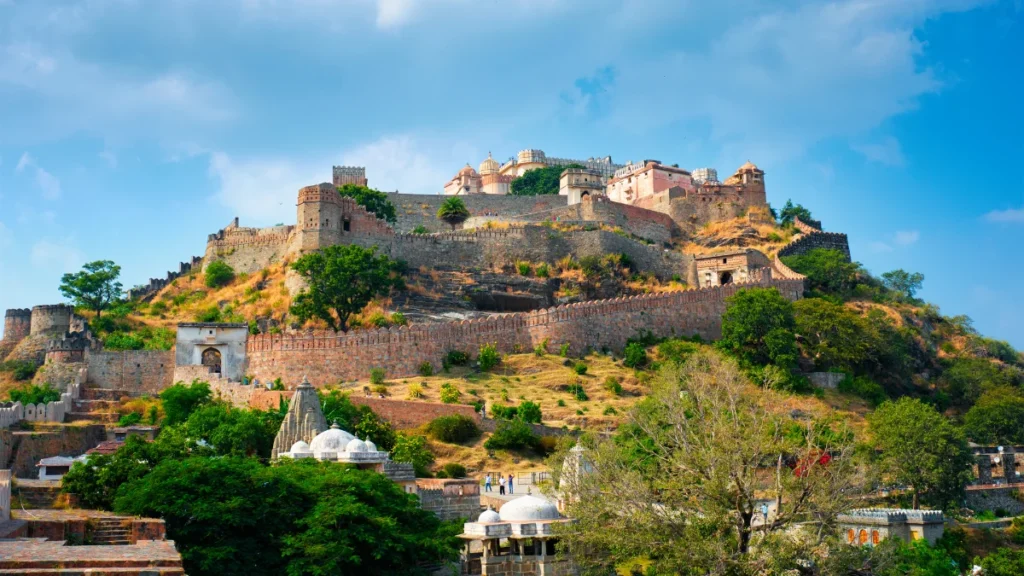
The architectural wonder of Kumbhalgarh Fort is perched atop the rough Aravalli Hills like a sentinel of greatness with its magnificent silhouette set against the blue sky. Constructed in the fifteenth century by Rana Kumbha, this stronghold spans more than 36 km and is the second-lengthiest continuous wall in the world, after the Great Wall of China. The massive gates and finely carved walls are resonant with stories of bravery and tenacity, providing an insight into Rajasthan’s colourful past. The winding and confusing pathways throughout the fort are marvellous. Kumbhalgarh is transformed into a world of dreamy beauty when the sun sets. With captivating light and sound shows that bring the history and stories to life, visitors may take in the magnificence of the fort beneath a starry sky.
For those who want to thoroughly immerse themselves in Kumbhalgarh’s charm, staying in Swiss tents and camps elevates the historical experience to a luxurious level. These lodgings, with their untamed surroundings, provide a special fusion of luxury and adventure, letting visitors experience the regal atmosphere of Rajasthan. Camping under the expansive night sky close to Kumbhalgarh Fort creates enduring memories of a trip through time and culture.
Timings: 09.00 A.M. to 06.00 P.M. on all days
Entry Fees: INR 10 for Indians and INR 100 for foreigners
2. Rajsamand Lake – One of the Best Places to Visit in Rajsamand
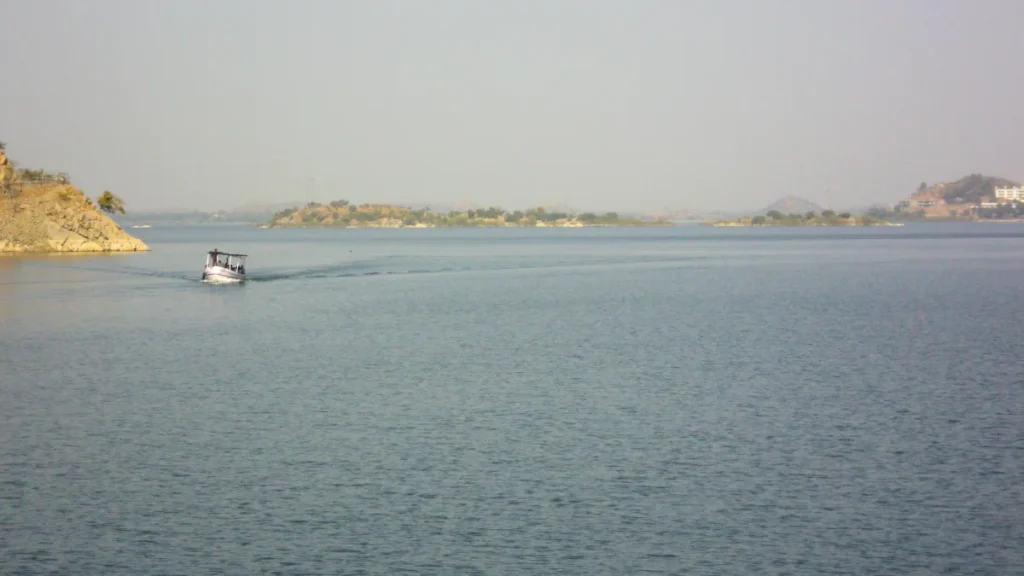
The placid charm of Rajsamand Lake, a peaceful haven amidst Rajasthan’s natural splendour, entices visitors. This large artificial lake, which was built in the seventeenth century on the orders of Maharana Raj Singh, is an example of the majesty and vision of Rajput architecture. The neighbouring Aravalli Hills are reflected in the placid waters of Rajsamand, offering a stunning vista that awes the senses. One of the most picturesque places to visit in Rajsamand is the lake, which is 1.75 miles long and has beautiful marble stairs all around it.
Rajsamand Lake’s collection of elaborate cenotaphs, or “Nauchowki,” which are proudly positioned along its embankments, is what really makes the lake unique. These finely carved buildings honour the valiant Mewar warriors and lend an air of regality to the surroundings. Visitors may enjoy a leisurely boat ride on the calm waters and experience the peace of the sinking sun. The atmosphere changes as dusk approaches, providing a serene escape from the daily grind. Rajsamand Lake is a tribute to the rich culture of Rajasthan, with its eternal beauty and historical relevance.
Timings: N/A
Entry Fees: N/A
3. Charbhuja Temple – Pay Your Respects
The Charbhuja Temple is a revered monument of devotion and architectural beauty located in the centre of Rajsamand. This hallowed Hindu temple to Lord Vishnu greets pilgrims and guests with elaborate carvings and colourful murals adorning its walls. The tranquil surroundings of the temple add to its holiness, and the deity, Lord Charbhuja, is adored with great veneration. The Charbhuja Temple, one of the most well-known places to visit in Rajsamand, is a timeless example of Rajput architectural brilliance in addition to providing a haven of spiritual solace.
Rajsamand’s charm is enhanced by the charming village of Gharbhor, which is only a short distance away and reveals itself as a hidden gem. This little, charming village in the heart of Rajasthan enthrals tourists with its understated elegance. An insight into the local way of life may be gained from the colourful marketplaces and traditional havelis. Tucked down in the heart of Rajsamand’s cultural environment, Gharbhor offers a tranquil haven for anyone looking for an authentic experience. Inviting visitors to discover the spiritual and cultural aspects of this captivating area, the Charbhuja Temple and the town of Gharbhor play a significant part in creating a rich tapestry of places to visit in Rajsamand.
Timings: N/A
Entry Fees: N/A
4. Shrinathji Temple – One of the Most Revered Temple in India
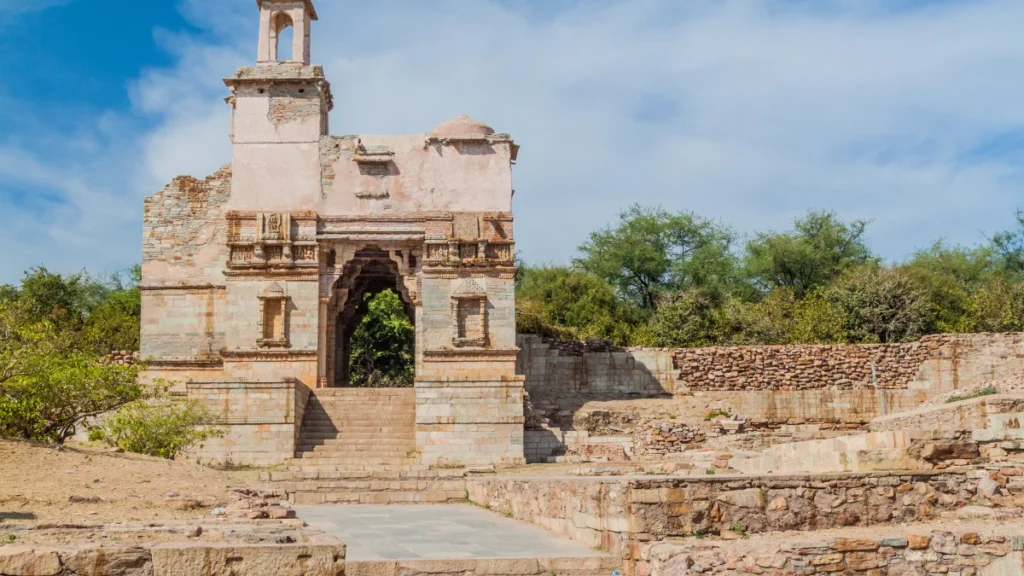
The holy place of Shrinathji Temple, which is tucked away in the charming town of Nathdwara, attracts both believers and onlookers with its heavenly aura. One of the most respected places to visit in Rajsamand District, this temple is devoted to Lord Krishna in his newborn form, Shrinathji. The deity is housed within the temple’s sacred walls, and followers flock to see the daily ‘darshan,’ a ceremony in which they view Him in variously decorated forms. A profound sense of spirituality permeates the air as lovely hymns and the aroma of incense fill it.
In addition to being a place of worship, the Shrinathji Temple is a showcase for the elaborate craftsmanship of Rajasthani buildings. The temple’s elaborate paintings, fine mirrorwork, and sculptures all contribute to its visual appeal. The sublime ambience and cultural richness that permeate the temple premises captivate both pilgrims and tourists. Only by experiencing the spiritual resonance of the Shrinathji Temple, which artfully blends tradition, faith, and art into the vivid fabric of Rajasthan’s cultural history, is a visit to Nathdwara complete.
Timings: N/A
Entry Fees: N/A
5. Haldighati – Witness History Unfold at the Museum Here
Tucked up in the gently rolling hills of Rajasthan’s Aravalli Range, Haldighati is a site blessed with striking natural beauty and historical significance. The name itself, “Turmeric Valley,” conjures up a clear image of the terrain, which is studded with yellow-coloured soil. The Battle of Haldighati, which took place in 1576 and pitted the armies of the powerful Mughal Emperor Akbar against Maharana Pratap of Mewar, gave Haldighati its lasting significance. The pass itself is a moving reminder of the bravery and sacrifice that took place on this important battleground, as hills and rich vegetation surround it. A sombre monument honouring Chetak, Maharana Pratap’s devoted horse, bears witness to the bravery and devotion that characterised this crucial period in Rajasthani history.
Beyond its significance to history, Haldighati captivates tourists with its picturesque beauty. The scenery, with its meandering streets and lush stretches of greenery, conveys a tranquillity that contrasts with the turbulent history. Situated nearby, the museum tells the story of Haldighati via artefacts and displays, providing an engaging historical trip. With its amazing blend of natural beauty and history, Haldighati is a place that captivates people who are interested in delving into the rich tapestry of Rajasthan’s cultural heritage.
Haldighati Maharana Pratap Museum Timings: 09.00 A.M. to 06.00 P.M. every day
Haldighati Maharana Pratap Museum Entry Fees: INR 50 per person
6. Kumbhalgarh Wildlife Sanctuary – Get Closer to Nature
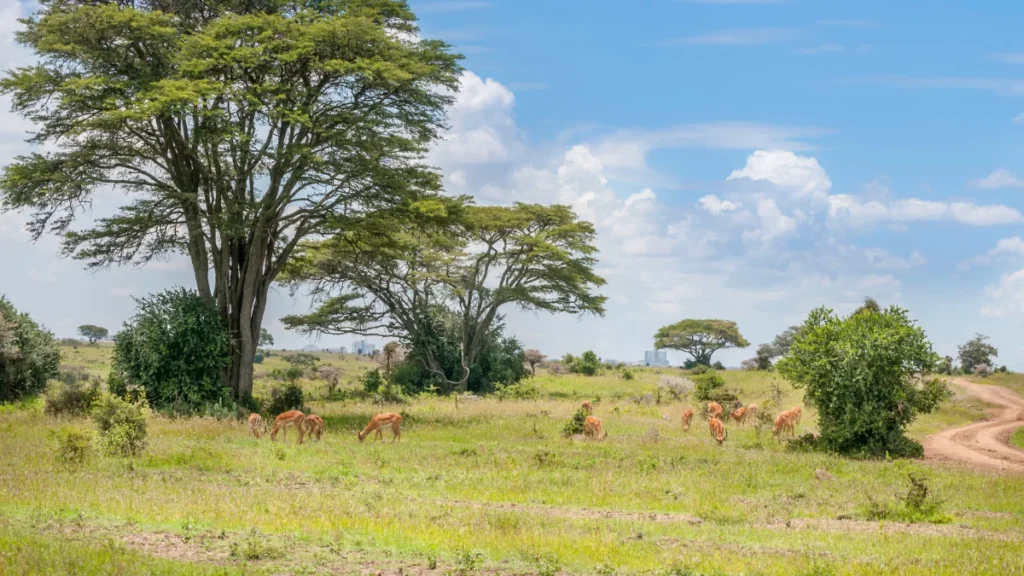
Tucked away in Rajasthan’s rough embrace of the Aravalli Range, the Kumbhalgarh Wildlife Sanctuary is a vast area of stunning scenery with a variety of habitats. This sanctuary, which spans a vast area of over 578 square kilometres, is an essential component of the larger Kumbhalgarh Wildlife Conservation Reserve. It provides a paradise for nature lovers and wildlife aficionados by acting as a refuge for a wide variety of animals, such as hyenas, leopards, sloth bears, jungle cats, and several types of deer. The sanctuary is a mesmerising location for individuals looking for a harmonic combination of biodiversity and scenic attraction because of its undulating topography, which is characterised by lush flora, rocky hills, and flowing streams.
The ancient Kumbhalgarh Fort, a UNESCO World Heritage Site, is nestled within the sanctuary’s natural beauty, lending the wildlife refuge a degree of cultural value. In addition to offering a window into Rajasthan’s rich past, the fort’s impressive design and advantageous location further improve the whole experience. Every step of the trip reveals the many marvels of Rajasthan’s biological and historical legacy, providing visitors to Kumbhalgarh Wildlife Sanctuary with an immersive and complete experience.
Timings: 07.00 A.M. to 06.00 P.M. every day
Entry Fees: INR 10 for Indians and INR 80 for foreigners
7. Kankroli – The Twin Town of Rajsamand
Tucked away as a twin city in Rajasthan’s Rajsamand District, Kankroli enhances its bigger sibling with unique charm and cultural importance. The serene Rajsamand Lake and the magnificent Dwarkadheesh Temple, which is devoted to Lord Krishna, are two of Kankroli’s many renowned places to visit in Rajsamand.
Kankroli is located around 65 miles from the beautiful city of Udaipur. It is known for the Dwarkadheesh Temple, which is situated on the banks of the picturesque Rajsamand Lake. For the Vaishnavas and members of the Vallabhacharya sect, this shrine is extremely sacred to the venerable Lord Krishna, also referred to as Dwarkadheesh. Beyond its serene atmosphere, Kankroli is home to the JayKay Gramme, which adds to the local fabric and is named after the JK Tyre company. Rajsamand is a fascinating region to explore, and Kankroli is a significant addition with its beautiful combination of peace, spirituality, and industrial influence.
Timings: N/A
Entry Fees: N/A
8. Deogarh – A Peek into History
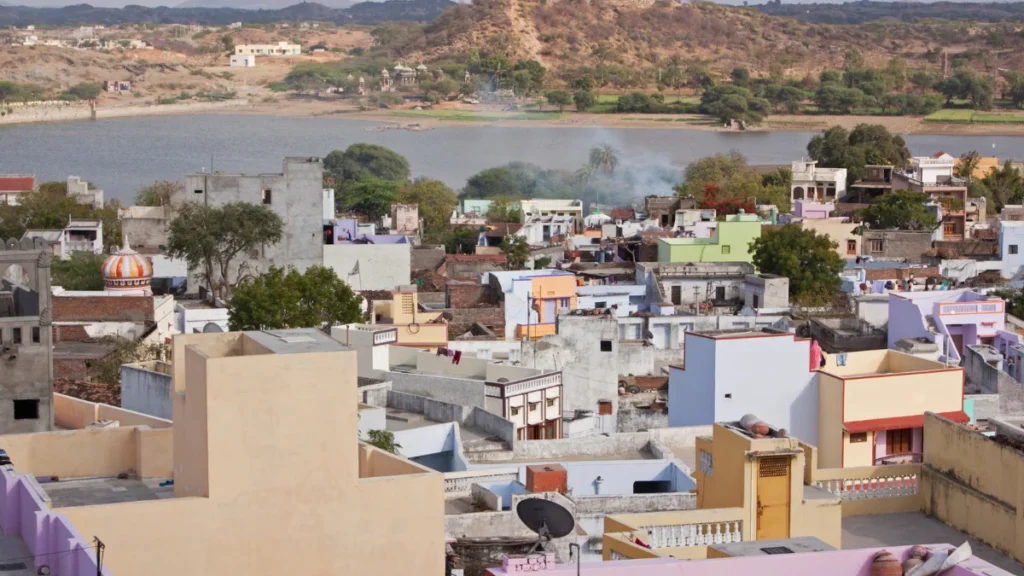
Tucked away in the Rajsamand region of Rajasthan, Deogarh is a hidden jewel that reveals a mosaic of architectural wonders and cultural legacy. The charming hamlet of Deogarh Mahal is well-known for its magnificent fort that has been transformed into a heritage hotel, serving as a testament to the area’s regal past. Deogarh Mahal, one of the most fascinating places to visit in Rajsamand, is adorned with elaborate carvings, exquisite paintings, and expansive vistas of the surrounding landscape.
Beyond the splendour of Deogarh Mahal, the town enchants tourists with the Gupta-era Dashavatara shrine, an old Hindu shrine. This architectural wonder offers a window into the creative grace of the bygone ages with its magnificent sculptures and detailed details. The placid Ragho Sagar Lake and the serene Anjaneshwar Mahadev Temple further enhance the calm atmosphere of the town. When you meander through the colourful bazaars and quaint havelis lining the tiny alleyways, Deogarh presents itself as a place where time stands still, providing an enthralling tour of Rajasthan’s rich cultural legacy.
Timings: N/A
Entry Fees: N/A
How to Reach Rajsamand
Rajsamand is easily accessible via the beautiful city of Udaipur.
· The Maharana Pratap Airport of Udaipur is the nearest airport to Rajsamand. You can take cabs and buses from there.
· Local and private buses run daily between Rajsamand and Udaipur. Rajsamand is also well-connected to Jaipur via road, and buses regularly ply here.
· You can also drive here via Udaipur and Kumbhalgarh.
Best Time to Visit Rajsamand
The perfect time to visit Rajsamand is during the winter when the temperatures are bearable, and it is not scorching hot outside. You can visit Rajsamand anytime between October and March.
Conclusion
One gets mesmerised by Rajsamand’s ageless charm as the sun sets over the serene Rajsamand Lake, saying goodbye to the majestic scenery and cultural treasures. With its ancient landmarks, such as the imposing Kumbhalgarh Fort and the tranquil Rajsamand Lake, this undiscovered jewel of Rajasthan tells the story of monarchy and scenic beauty. A site where history whispers through the breezes and culture resounds in every stone is depicted by the elaborate cenotaphs that line the lake’s shores, the colourful bazaars and the historic temples.
Each location in the list of places to visit in Rajsamand has a distinct history that connects the many strands of the state’s illustrious past. The colourful present is mirrored in the busy marketplaces where traditional crafts flourish, and the elaborately carved walls of the forts carry the ghosts of the past. With its harmonious blend of royalty and tranquillity, Rajsamand welcomes visitors to embark on a voyage through time, where each step leads to a fresh revelation. Rajsamand beckons, leaving an enduring impression on the hearts of those who seek the charm of Rajasthan’s natural and cultural treasures, whether they want to explore the historical marvels or lose themselves in the cultural tapestry.




